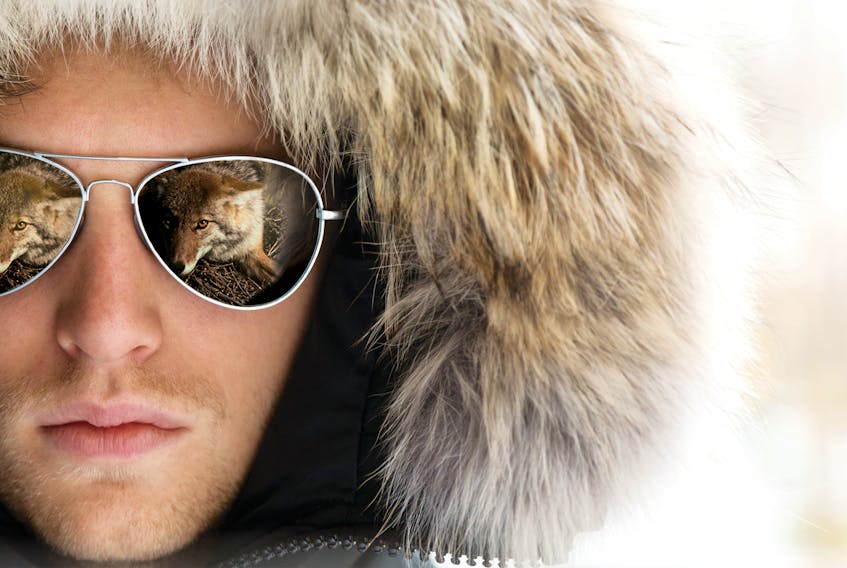TRURO, N.S. — Earlier this winter a young coyote in Ontario chewed off his hind feet to escape a trap.
Last winter, a German shepherd in British Columbia chewed off a foot to get out of a trap.
Just outside of Truro, a thin cat with a snare digging into his neck managed to get free. It took weeks for his neck to heal.
Two people I know had their dogs caught in a trap while walking along a trail with them. One of those dogs choked to death before his human could free him.
These are the images and stories that should be attached to fur garments.
The fur-trim trade has recently created a demand for coyote fur. The rise in demand is often connected with Canada Goose parkas, which some people wear without any knowledge of the suffering behind them.
Although most places, including Nova Scotia, have regulations on how often traps are to be checked, some people leave them unchecked for several days. The terrified animals are left in fear and pain, experiencing thirst and hunger. When a trapper arrives, the animal may be shot or beaten to death. Animals caught in underwater traps drown.
Some fur comes from animals raised in captivity. They usually have short, miserable lives in dirty, cramped cages before being killed through gassing, neck-breaking, poisoning and electrocution.
China, with no laws to protect animals, produces a large amount of fur. Investigations found animals, including cats and dogs, were beaten, hanged, and even skinned alive.
Dog and cat fur are often labelled as Gae-wolf, Asian wolf, Asiatic raccoon, China wolf, Corsac fox, Goupee, Pommern wolf, Loup d'Asie, Asian jackal, Dogue de Chine, Sobakigae-wolf, Mongolian dog fur, and Asiatic racoon, Katzenfelle, Goyangi, Mountain cat, rabbit, maopee, gatto cinesi, natuerliches mittel, chat de Chine, and faux fur.
Fur manufacturers in China told Humane Society investigators they could sew any label asked for onto dog and cat fur products to make them more marketable.
Those cute little furry cat ornaments, bobble hats, and fur-trimmed items could be the result of suffering experienced by animals much like the pets in your home.
Because some of this fur is so cheap, it’s not possible to tell whether it’s real or fake by price. If you want to check, look at the ends. Real fur has pointed ends, while faux fur has blunt ends. Check the base. If it’s real, it looks much like parting pet hair. If you own the item, burn a few hairs. Real fur smells like burning human hair, while faux fur melts and smells like plastic.
Real fur is beautiful on the animal that grew it, but ugly on people.
Many companies make great quality outdoor clothing without using fur. If you’re going to buy, check out the company whenever possible and make the humane choice.








